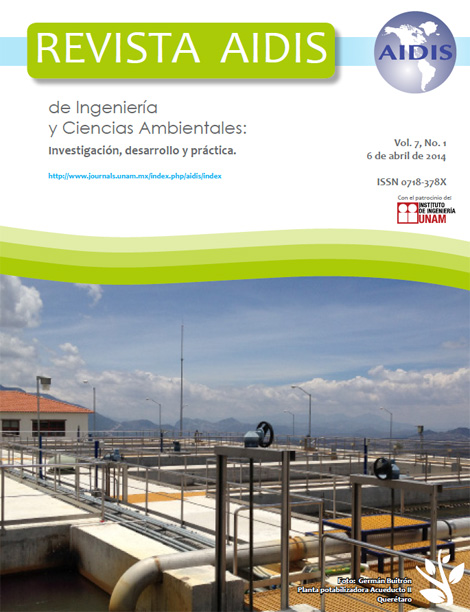AMMONIACAL NITROGEN REMOVAL FROM SANITARY LANDFILL LEACHATE BY STRIPPING PROCESS USING A BAFFLED REACTOR
Main Article Content
Abstract
Ammoniacal nitrogen in Sanitary Landfill Leachate may reach concentrations up to 2000 mg/L, which, if discharged into the environment under such concentrations, may cause severe environmental and public health impacts. The stripping process is a technical highlight among the alternatives for leachate ammoniacal nitrogen removal employed worldwide. The comparison of the analyses performed at inflow and outflow, at the São Leopoldo/Brazil Leachate Treatment Plant wastewater (lagoons), showed an ammoniacal nitrogen removal rate that ranged between 38% and 65% in 90 days of HRT. On the other hand, the Baffled Reactor yielded a 73% removal rate in 12 days. Statistically, the “temperature” variable affected Ammoniacal nitrogen removal, such that the higher removal rates were associated to environmental temperatures above 20ºC, thus rendering this technology as useful in tropical countries. The Baffled Reactor demonstrated to be applicable for use in sanitary landfills that produce 0.33 m³ of leachate per day. This value corresponds to service provided to a small scale municipality with a population of up to 10.000 inhabitants. Treatment operational cost using the reactor was estimated to be US$ 30.25/m3 of treated leachate, which is an interesting result if compared with other ammoniacal nitrogen removalunits, as well as with ex situ treatment processes.
Key Words: Landfill, Leachate treatment, Ammoniacal nitrogen removal.
